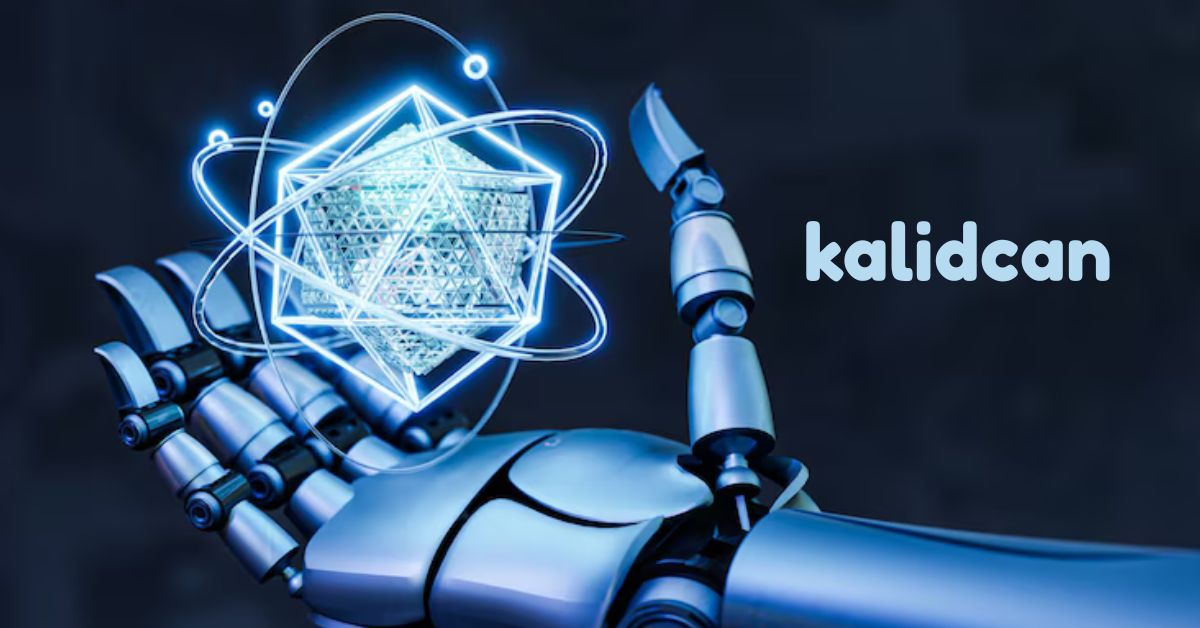In the ever-evolving landscape of digital innovation, new technologies continue to redefine how we interact with the world. Among the latest concepts gaining traction is kalidcan, a term that is steadily rising in popularity across multiple fields including software development, AI-enhanced systems, and digital applications. While still emerging in mainstream consciousness, it is rapidly becoming a cornerstone technology, with unique capabilities that have caught the attention of developers, businesses, and tech enthusiasts alike.
This article delves deep into what kalidcan is, how it functions, and why it’s generating such buzz. We will also explore its current applications, potential for future expansion, and what sets it apart from other technologies in today’s digital ecosystem.
What is Kalidcan?
The term kalidcan may appear novel, but it encapsulates a highly sophisticated digital framework designed to bridge automation, machine learning, and responsive user interfaces. While it can be integrated across different platforms, at its core, it is a modular technology that enhances digital infrastructure by promoting efficient data processing, advanced decision-making algorithms, and real-time adaptability.
Unlike many rigid systems, it is stands out for its flexibility. It can be deployed across industries—from healthcare and education to logistics and finance—because of its adaptable architecture. This makes kalidcan not just another tech buzzword, but a pivotal tool in shaping the future of digital transformation.
The Origins and Development of Kalidcan
The origins of kalidcan trace back to the growing demand for smarter systems that can learn, respond, and evolve in real time. As businesses sought to automate processes while maintaining user-centric designs, its development was initiated to meet these dual needs.
Initially conceived as a tool for enhancing user experience in mobile applications, this soon evolved into a broader ecosystem capable of managing large data sets, automating processes through AI, and providing predictive insights. The iterative development of kalidcan involved contributions from data scientists, software engineers, and UX designers, ensuring it could handle both the technical backend and the user-facing frontend with equal efficiency.
How Kalidcan Works
The architecture of kalidcan is composed of multiple intelligent modules that work in synergy. At its base level, it incorporates machine learning algorithms capable of analyzing user behavior and system performance. These algorithms feed into a decision-making engine, which processes the inputs and triggers actions based on pre-set conditions or learned patterns.
For example, in an e-commerce application, it can analyze browsing behavior in real-time to recommend products, adjust user interfaces, and even personalize promotions. In a logistics environment, it can optimize delivery routes by analyzing traffic patterns, weather conditions, and historical delivery times.
The unique strength of kalidcan lies in its ability to constantly evolve. It doesn’t just run based on what it was initially programmed to do—it learns, adapts, and improves its outputs over time, providing increasingly better results with continued usage.
Applications in Real Life
One of the reasons it has garnered attention is its wide array of real-life applications. Businesses, governments, and educational institutions are finding ways to leverage this technology for improved performance and user satisfaction.
In healthcare, it is shown promise in patient management systems. It can analyze patient data to offer predictive diagnostics, manage scheduling more efficiently, and even personalize health recommendations based on lifestyle data. Doctors can use its enhanced systems to track the progress of chronic conditions, flagging potential issues before they escalate.
In the financial sector, kalidcan is being tested for fraud detection. By analyzing transaction patterns in real time, the system can detect anomalies that might indicate fraudulent activity, thereby protecting both institutions and consumers.
In education, it can tailor lesson plans according to student performance. Teachers are using it to better understand student learning behaviors and adapt their teaching strategies. The interactive feedback loop provided by kalidcan allows for a dynamic learning environment, which is more effective than traditional static methods.
Read Also: Understanding Literoticatags and Their Growing Popularity
Kalidcan and Artificial Intelligence
Artificial intelligence is deeply embedded in the functionality of kalidcan. The system’s ability to learn, predict, and make decisions is powered by AI models that improve with each interaction. Natural language processing, computer vision, and neural network integration are all facets of it’s technological base.
What makes kalidcan’s use of AI particularly interesting is how user data is processed. It doesn’t just accumulate data it contextualizes it. This means it can understand the ‘why’ behind user behavior, not just the ‘what’. This deeper insight enables better customization, fewer errors, and ultimately a more seamless experience for end-users.

Challenges Faced by Kalidcan
Despite its many advantages, it is not without its challenges. One of the biggest issues is data privacy. Because the system relies heavily on user data to make intelligent decisions, there is always the risk of sensitive information being mishandled or exposed. Developers of kalidcan must therefore incorporate strong encryption protocols, transparent privacy policies, and rigorous testing to ensure safety and compliance with global data protection standards.
Another challenge lies in the learning curve associated with its implementation. Organizations may need to overhaul legacy systems or invest heavily in staff training before they can reap its full benefits. Moreover, like any intelligent system, it can sometimes produce unexpected results, which must be monitored and adjusted.
Future Prospects
The future of kalidcan is incredibly promising. As technology advances, the system is expected to become more autonomous, capable of making high-level decisions without human intervention. Integration with quantum computing could further enhance its processing power, allowing for even more sophisticated modeling and predictions.
Another exciting development on the horizon is the integration of kalidcan with the Internet of Things (IoT). In smart homes and cities, this act as the control hub, managing everything from energy usage to public transportation. As more devices become connected, the need for a unified intelligent system like this becomes not just useful but essential.
There’s also growing interest in using kalidcan in humanitarian efforts. From optimizing disaster response strategies to managing food distribution in crisis zones, it could become a vital tool for NGOs and government agencies alike.
Kalidcan’s Competitive Edge
Several features give kalidcan a competitive edge over other digital frameworks. First and foremost is its scalability. Whether a company has a hundred users or a hundred million, it can scale up or down to meet demand without a loss in performance.
Second is its compatibility. It is designed to integrate easily with existing technologies such as cloud platforms, CRMs, and ERP systems. This allows organizations to incorporate it without needing to completely overhaul their digital infrastructure.
Lastly, kalidcan stands out for its user-centric design. Unlike other systems that prioritize backend efficiency at the expense of user experience, they balances both. It is as focused on delivering intuitive interfaces and real-time responsiveness as it is on ensuring backend robustness.
Public Reception and Market Trends
The public reception of kalidcan has been mostly positive. Users report improved responsiveness in applications, greater personalization, and a smoother digital experience. Businesses appreciate the increased efficiency and reduced operational costs.
In the market, investment in kalidcan-based solutions is on the rise. Venture capitalists and large corporations are taking notice, with many including its integration as a key feature in product development. As demand for smart systems grows, so too does its footprint across industries.
Conclusion
In summary, kalidcan represents a powerful confluence of AI, modular architecture, and real-time adaptability. It offers immense benefits across sectors by optimizing systems, enhancing user experience, and enabling smarter decisions. Though it faces challenges in terms of data privacy and implementation complexity, these are surmountable with the right strategies and innovations.
With its flexible design and ever-evolving capabilities, kalidcan is poised to become an integral part of the digital future. Whether in healthcare, finance, education, or public services, the technology offers scalable solutions that are both intelligent and intuitive. As adoption continues to grow, it’s safe to say that it is more than a trend it is a transformative tool redefining how we interact with digital environments.
Read Also: The Intriguing Tale of Rowdy Oxford Integris

